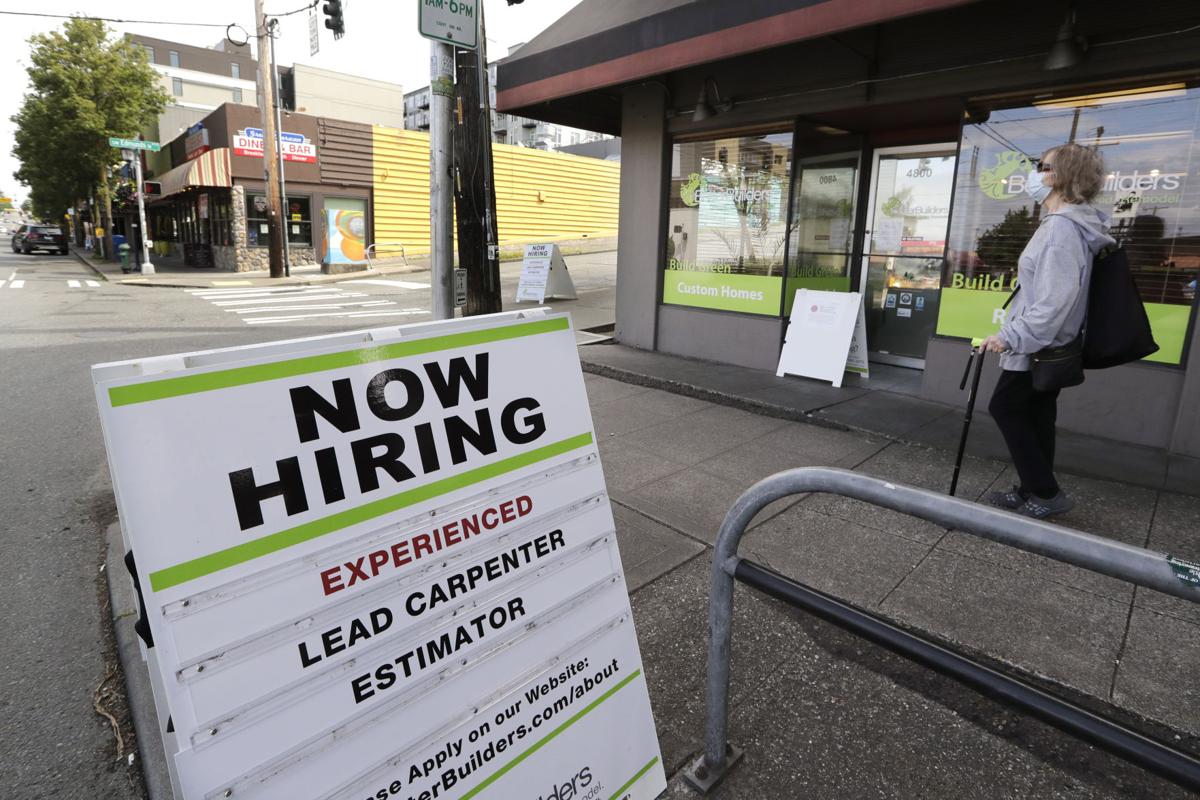The U.S. economy is expected to have added millions more payrolls in June from May, as regions across the country eased social distancing restrictions and allowed more businesses to reopen.
The unemployment rate is likely to have fallen from May’s level but still held at a historically high level, as many Americans remained out of work with the pandemic still under way.
The Department of Labor’s June jobs report will be released on Thursday, a day earlier than typical, in observance of the Fourth of July holiday on Friday. Here were the main metrics expected in the Department of Labor’s report, compared to consensus estimates compiled by Bloomberg as of Wednesday morning:
- Change in non-farm payrolls: +3.074 million expected, +2.509 million in May
- Unemployment rate: 12.5% expected, 13.3% in May
- Average hourly earnings, month on month: -0.8% vs. -1.0% in May
- Average hourly earnings, year on year: +5.3% vs. +6.7% in May
The June jobs report comes following a massive upside surprise in May, during which the economy unexpectedly added a net 2.5 million non-farm payrolls for the biggest gain on record, based on data extending back to 1939. A loss of more than 7 million jobs had been expected beforehand.
Estimates for the June payrolls gain also spanned a wide range, though none of the more than 70 economists polled by Bloomberg expected to see net job losses for June.
“We are in a whole new world of trying to model what data is going to be, because there’s not an economist in the world that’s ever gone through a forced economic shutdown,” Tom Essaye, Sevens Report Research founder, told Yahoo Finance’s The First Trade on Tuesday. “And that’s why a lot of these numbers are completely blowing past what the expectation is.”
Downside risks to the June report remain, however. Some economists noted that stimulus-related impacts may have powered May’s non-farm payrolls gain, distorting the underlying trends in hiring in a way that may not have been replicated in June.
In a note, Barclays economist Michael Gapen highlighted “the possibility that the burst in employment was temporarily fueled by [Paycheck Protection Program] lending requirements that simply pulled forward hiring that was previously expected in June.”
“If so, this would suggest that the surge in May hiring was more of a one-off event and we could see some give-back in June employment,” he added.
But other data has underscored the labor market’s steady improvement over the past two months. Jobless claims have fallen in every week since early April, and continuing unemployment claims trended slightly lower in June. Employment indices in each of the Institute for Supply Management’s manufacturing and non-manufacturing surveys improved in the latest reports.
Still, ADP’s monthly jobs report Wednesday missed estimates, and showed net private payroll gains edged down to nearly 2.37 million in June, from May’s upwardly revised gain of more than 3 million.
In the May Labor Department report, the leisure and hospitality industries had handily led gains in non-farm payrolls, with these types of jobs rising by more than 1.2 million. That leadership is expected to extend into June, as the firms hardest hit by social distancing see the biggest initial pay-back as states reopen businesses.
“Improvement by sector was broad-based in May as compared to the February-April average,” Sam Bullard, chief economist for Wells Fargo Securities, said in a note. “This positive tone should extend into June, with the hardest hit sectors still likely to garner the strongest hiring gains.”
Meanwhile, economists also expect an extended retreat in average hourly earnings on a month on month basis for June, as more workers across the income scale returned to work.
“Low-wage workers bore the brunt of recent months’ net decline in employment,” UBS economist Seth Carpenter said in a note. “As they return, the compositional shift in employment pushes down average hourly earnings.”

